Nano Fluid in Heat Source Channel, Mixture Multiphase
$120.00 $60.00 Student Discount
- The problem numerically simulates the Nano Fluid Flows in a Heat Source Channel using ANSYS Fluent software.
- We design the 3-D model with the Design Modeler software.
- We mesh the model with ANSYS Meshing software, and the element number equals 2160625.
- We use the Mixture Multiphase model to define a nanofluid.
Click on Add To Cart and obtain the Geometry file, Mesh file, and a Comprehensive ANSYS Fluent Training Video.
To Order Your Project or benefit from a CFD consultation, contact our experts via email (info@mr-cfd.com), online support tab, or WhatsApp at +44 7443 197273.
There are some Free Products to check our service quality.
If you want the training video in another language instead of English, ask it via info@mr-cfd.com after you buy the product.
Description
Nano Fluid Flows in a Heat Source Channel, Applying Mixture Multiphase Model, ANSYS Fluent Training
The present problem simulates the flow of an Al2O3-water nanofluid into a channel with a heat source using ANSYS Fluent software. This channel has a square cross-section and has ten obstacles inside.
Each of these obstacles has two diagonal plane barriers facing each other and a cylindrical barrier between them. Hence, the presence of these barriers determines the path of nanofluid flow through the channel.
Therefore, two different materials have been used water as the primary fluid and aluminum oxide (Al2O3) as the secondary fluid.
Aluminum oxide is defined as having a density of 3970 kg/m3, a specific heat capacity of 768 j/kg.K, a thermal conductivity of 40 W/m.K, and a viscosity equal to 0.000017894 kg/m.s and a molecular weight equal to 28.966 kg/kmol.
Also, the aluminum oxide particles defined as a secondary fluid have a diameter of 0.00001 m. In the lower part of this channel, there is a solid area of aluminum.
The floor wall is under constant heat flux equal to 170,000 W/m2, which is responsible for transferring heat to the channel carrying the nanofluid. The simulation process is done in two steps.
At first, the simulation is performed in single-phase mode (pure water flow only). In this case, water flow enters the channel at a temperature of 300 K and a speed of 2.233 m/s. Then, the simulation is performed in a two-phase model (water flow containing aluminum oxide nanoparticles).
In this case, the nanoparticle of aluminum oxide enters the channel with the same water flow speed and temperature; Thus, the nanoparticle volume fraction is equal to 0.01.
The current model is designed in three dimensions using Design Modeler software. The model consists of a horizontal channel for the flow passage located on a solid object with heat flux.
The canal has a rectangular section with dimensions of 0.001 m * 0.0015 m, with ten obstacle categories. Each obstacle category consists of two diagonal plane barriers relative to each other and a cylindrical barrier between them.
The solid aluminum body under the channel has dimensions of 0.002 m * 0.02 m * 0.05 m. The following figure shows a view of the geometry.
The meshing of the present model has been done using ANSYS Meshing software. The mesh type is unstructured, and the element number is equal to 2160625.
Heat Source Methodology
To define the nanofluid, a mixture multi-phase model is used. The multi-phase mixture model is used when the mixing process occurs between a fluid and a solid particle. The boundary between the solute and the solvent is not accurately discernible.
Heat Source Conclusion
At the end of the solution process, two-dimensional and three-dimensional contours related to the mixing pressure, mixing temperature, and velocity of each of the water and Al2O3 phases are obtained. Two-dimensional contours are obtained in two sections of X_Z and Y_Z in the fluid flow region.
The fluid temperature increases as the fluid flow to the outlet section because of a heat source. At the same time, the nanoparticles enhance the temperature magnitude because of the more heat transfer.

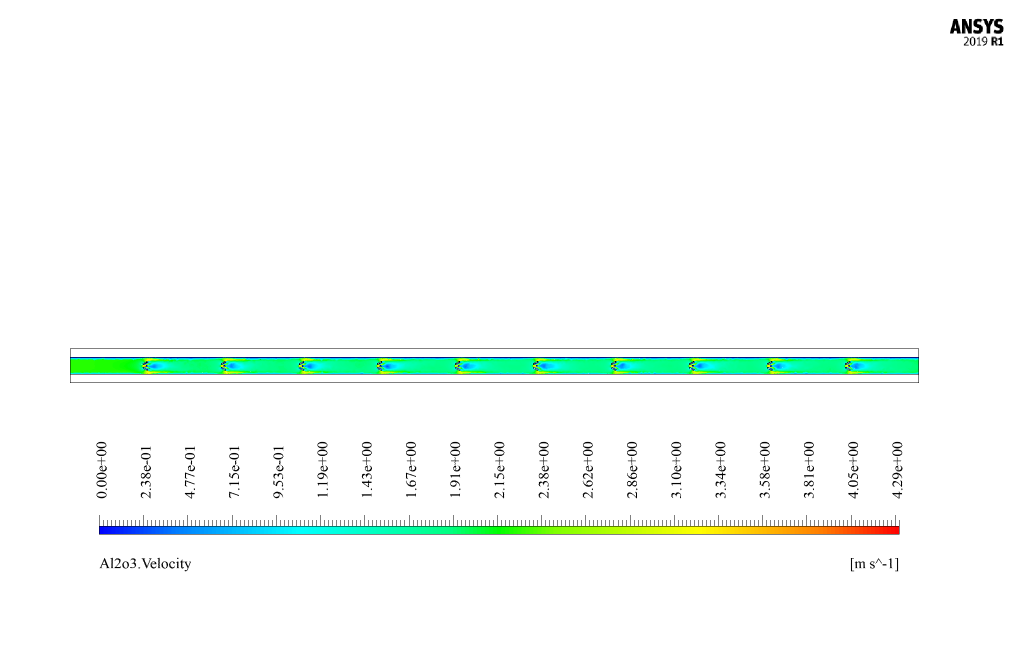
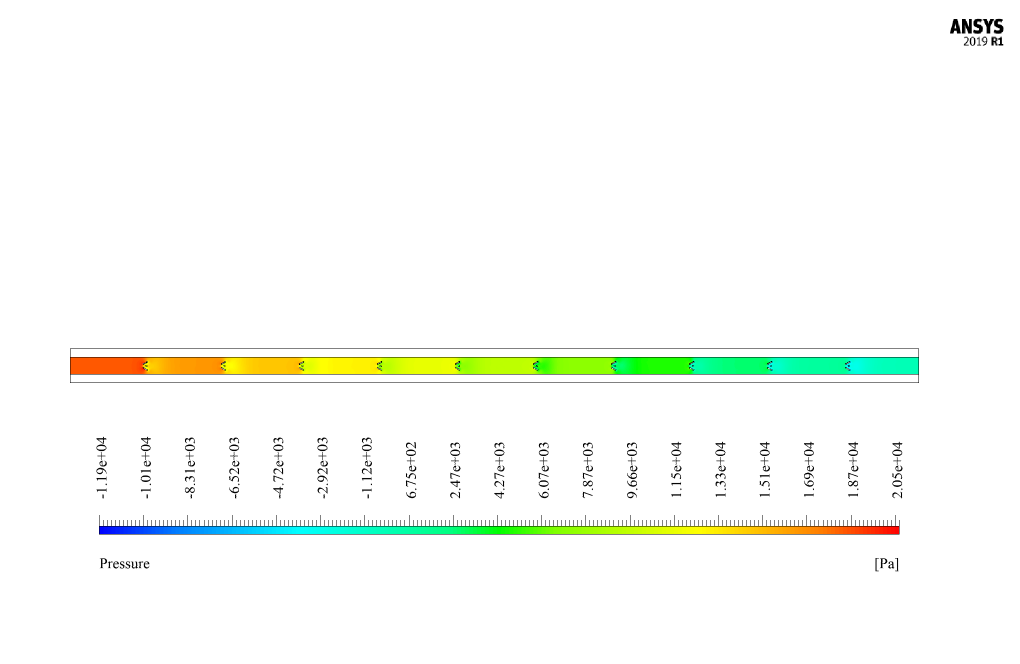
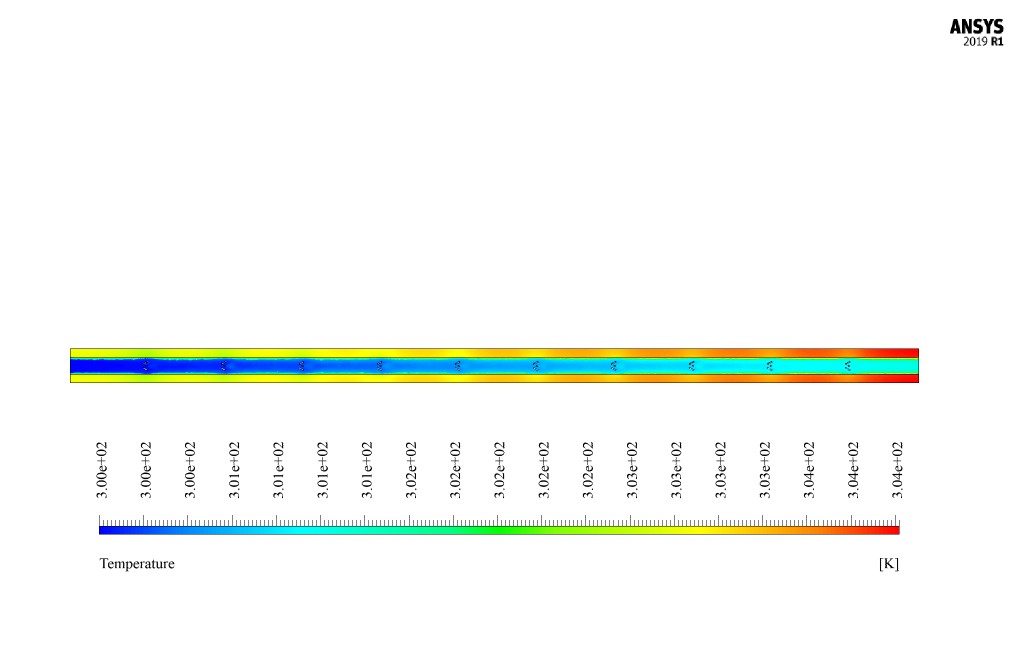
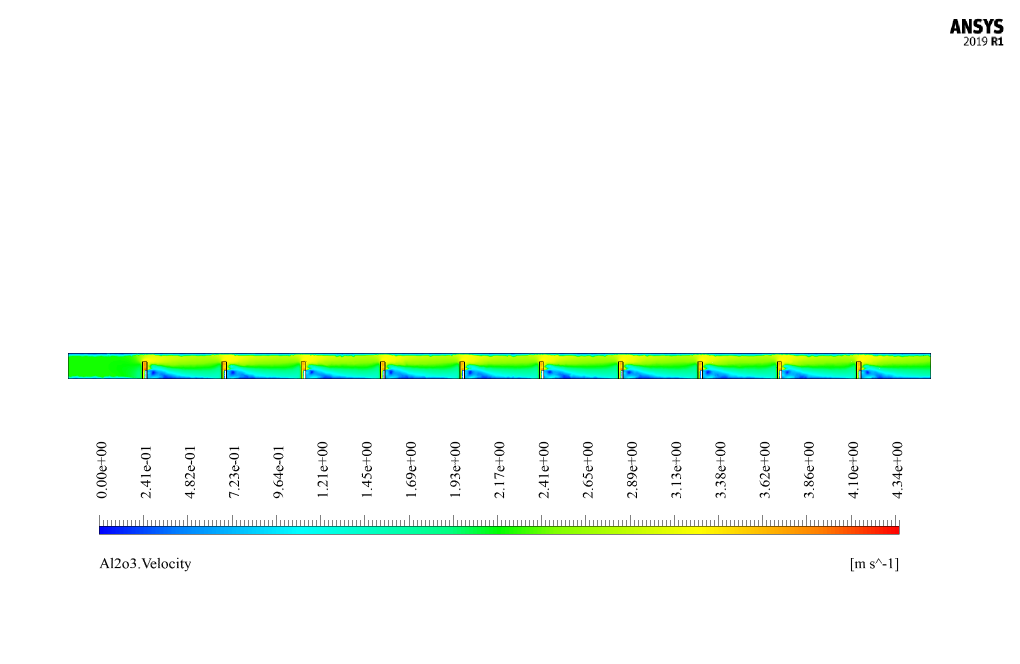

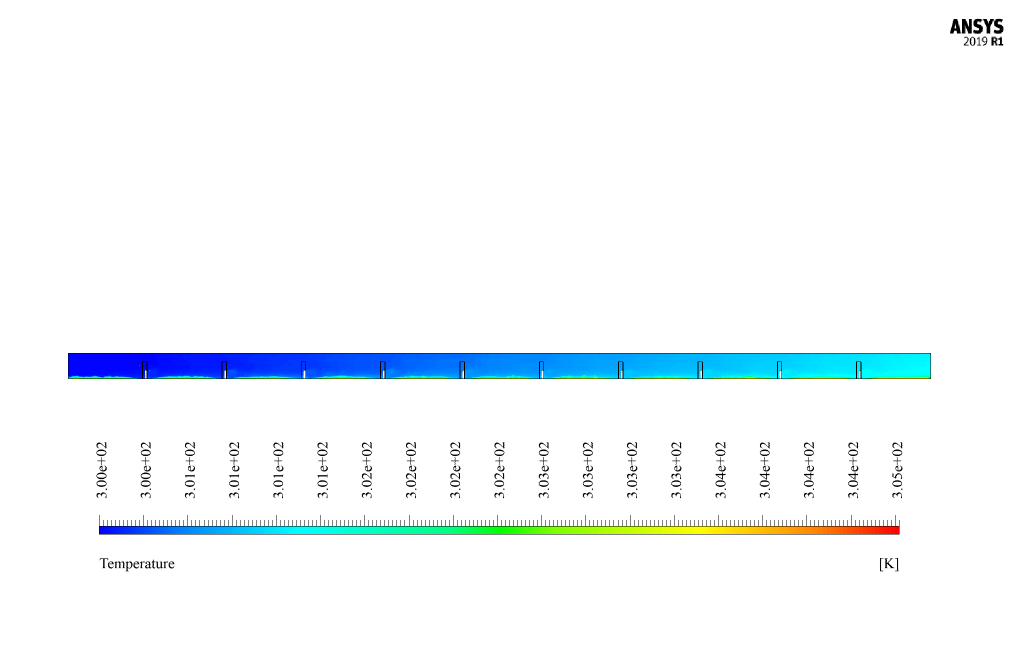
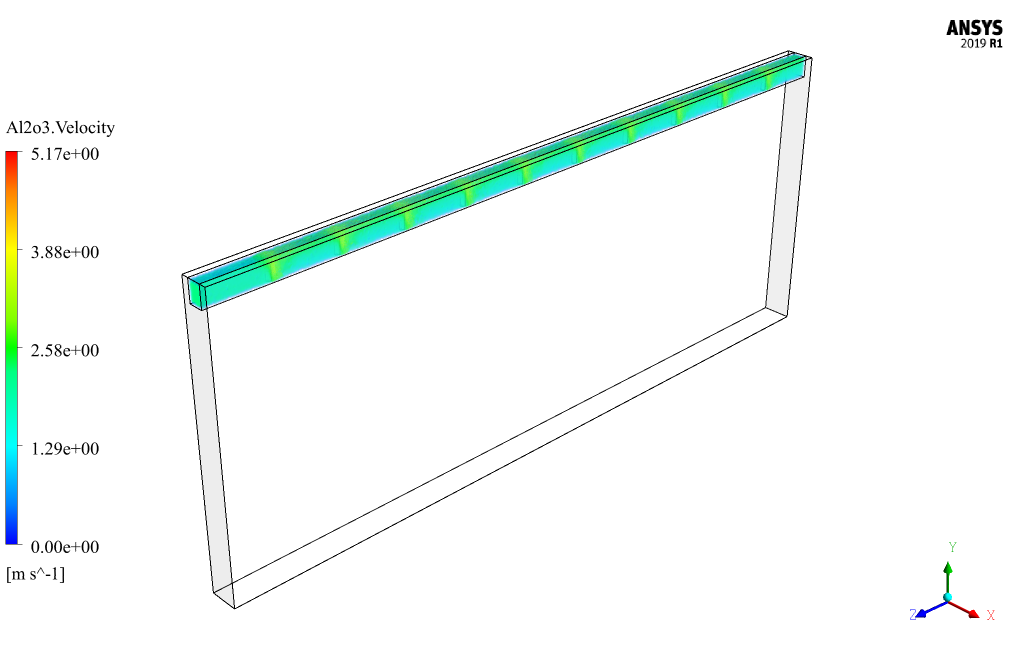
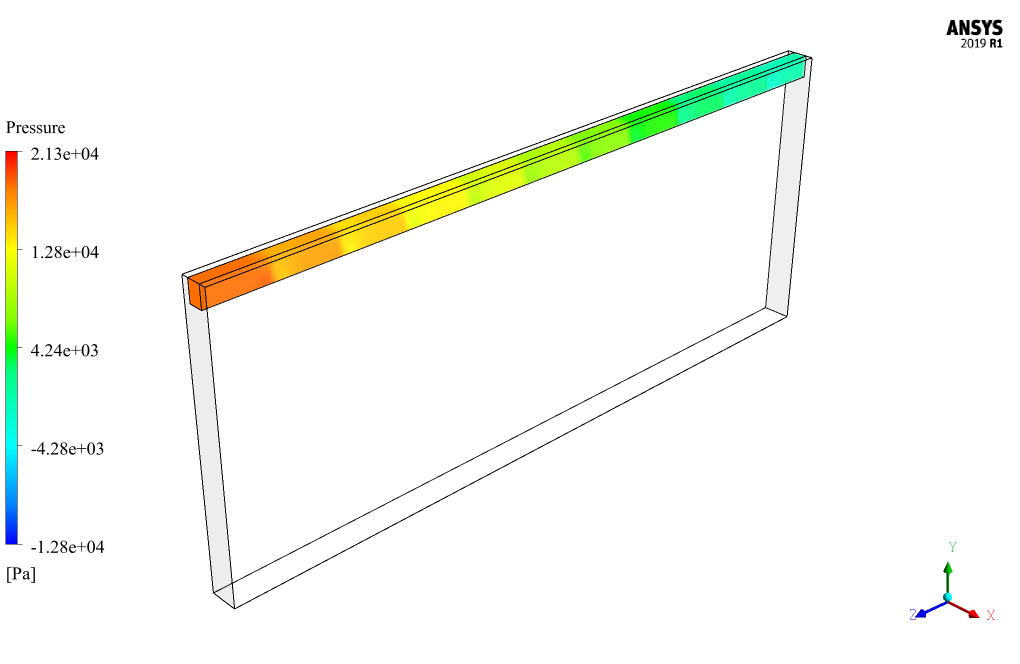


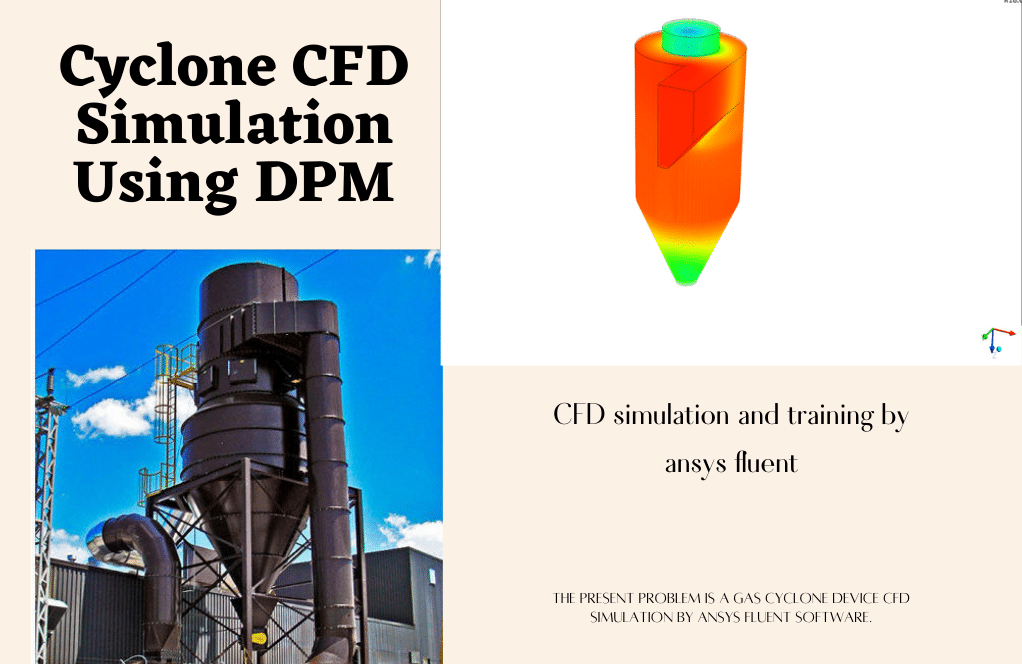
Travon Will –
I found the concept intriguing: using nanoparticles in a heat source channel. I’m curious, what is the main outcome of introducing Al2O3 nanoparticles into the fluid? What advantage do they provide in terms of heat transfer in this simulation?
MR CFD Support –
The introduction of Al2O3 nanoparticles into the fluid increases the thermal conductivity of the nanofluid compared to the base fluid, which is water in this case. The increased thermal conductivity leads to a more efficient and enhanced heat transfer from the heat source to the fluid, improving the system’s thermal performance. In this simulation, including aluminum oxide nanoparticles results in a significant improvement in heat transfer efficiency within the channel.
Karli Ondricka DVM –
The detailed simulation of nano fluid flow is impressive! It demonstrates how ANSYS Fluent can be harnessed for precise and intricate modeling, especially when dealing with a mixture of multiphase systems. Great job on utilizing the mixture model for the Al2O3-water nanofluid and the thorough analysis of heat transfer enhancement due to the nanoparticles.
MR CFD Support –
Thank you for your kind words and recognition of the detailed simulation of nano fluid flow. We are thrilled to hear that you are impressed with the precision and intricacy of the modeling in ANSYS Fluent. We appreciate your acknowledgment of our use of the mixture model and analysis of heat transfer. Your feedback is highly valuable to us, and we look forward to continuing to serve you with high-quality learning products.
Emilia Olson –
I am really pleased with the cleanness of the results. The contours for mixing pressure and temperature made the effects of nanofluid on heat transfer very clear. Great product!
MR CFD Support –
Thank you very much for your kind words! We’re thrilled to hear that the simulation results were clear and helpful for your understanding of nanofluids’ effects on heat transfer. We aim to provide informative and clean visuals to support learning. We appreciate your feedback!
Conner Breitenberg –
The activation of the Open Channel Wave BC for seawater wave representation was excellent. It brought the simulation closer to reality. Can you share more on how this helped with the overall analysis?
MR CFD Support –
I’m pleased you appreciated the Open Channel Wave Boundary Condition approach. Since the fish cage interacts with a dynamic environment, accurately simulating the waves ensures that the interaction between the fluid forces and the structural responses is realistic. It allows the model to capture nuanced flow patterns, force distribution variations, and potential deformations that occur as a result of those waves. Moreover, using this condition alongside the two-phase VOF model for air and seawater gives us valuable insights into how the floating structure behaves under realistic sea conditions.
Velva Sporer –
I was fascinated by how the nano fluid’s temperature changed as it flowed over the heat source in the channel. The simulation with the nanoparticles seemed to show a significant enhancement in heat transfer. Great product for understanding the impact of nanoparticles on fluid heat transfer!
MR CFD Support –
Thank you for your kind words! We are thrilled to hear that you were able to gain valuable insights into nano fluid behavior and heat transfer through our simulation product. Your experience underscores the importance of comprehensive analysis in understanding the thermal dynamics of nano fluids. We appreciate your feedback and are glad our product could facilitate such an enriching learning experience.
Prof. Laurel Ankunding III –
Really fantastic results with the Nano Fluid simulation in ANSYS Fluent. The enhancement in heat transfer provided by the nanoparticles is really impressive.
MR CFD Support –
Thank you for your positive feedback! We’re thrilled to hear that our ANSYS Fluent training materials were helpful and that the nanoparticle simulation provided clear and impressive results. If you need further assistance or are interested in exploring more simulations like this one, please feel free to reach out to us.
Carter Kuphal –
I’m impressed with the level of detail in the simulation’s methodology. Can I expect a significant efficiency increase in heat transfer when using this Al2O3-water nanofluid as compared to regular water in similar conditions?
MR CFD Support –
Thank you for your positive feedback on the level of detail in our methodology. Yes, using an Al2O3-water nanofluid typically increases the efficiency of heat transfer compared to using regular water. The nanoparticles enhance the thermal conductivity, allowing the nanofluid to transfer heat more effectively. This improvement in heat transfer efficiency is due to the unique properties of the nanoparticles and their interaction with the fluid.
Miller Hessel –
I love how the Nano Fluid flow in the Heat Source Channel simulation captures the complexity of the flow dynamics and heat transfer enhanced by nanoparticles. The detail on heat flux and boundary conditions is appreciated.
MR CFD Support –
Thank you for your positive feedback! We’re delighted that you appreciate the details and complexity of the simulation, highlighting the effects of nanoparticles in enhancing heat transfer within the channel. It’s great to hear that the information on heat flux and boundary conditions met your expectations.
Dr. Kellen Towne II –
The tutorial was massively helpful! I was particularly impressed with the clear explanation of how the mixture multiphase model was applied for the nanofluid simulation.
MR CFD Support –
Thank you for your kind words! We’re elated to hear the tutorial was helpful and clear, especially regarding the mixture multiphase model application. Your feedback is much appreciated and encourages us to keep delivering high-quality learning materials. Let us know if you have any more questions!
Angelo Daniel –
The product helped me a great deal in understanding nanofluids behavior in heat transfer applications. The tutorial effectively demonstrates the usage of ANSYS Fluent for complex multiphase simulations. I especially appreciated the comprehensive explanation of the different temperature and pressure contours resulting from the heat source.
MR CFD Support –
We’re glad to hear that our training material on the Nano Fluid in Heat Source Channel has been effective for your learning experience with ANSYS Fluent simulations. Thank you for acknowledging the depth of explanation and realism we aim to provide in our tutorial. We look forward to continuing to support your studies and any further CFD endeavors.
Bradley Wehner –
The tutorial for Nano Fluid in Heat Source Channel, using Mixture Multiphase Model was quite insightful! The step-by-step guide made the process easy to understand, and the clear definitions and functions of the aluminum oxide nanoparticles really helped clear up former questions I had about nanofluids in heat transfer applications.
MR CFD Support –
We’re delighted to hear that our training on Nano Fluid in a Heat Source Channel using the Mixture Multiphase Model met your expectations and provided clarity about the role of nanofluids in heat transfer. Your feedback is greatly appreciated, and we’re here to assist with any further learning needs!
Annabel Leffler –
Very impressed with the depth of simulation on nanofluid flow using the mixture multi-phase model. The increased heat transfer as a result of introducing nanoparticles is quite fascinating!
MR CFD Support –
Thank you so much for your kind words! We’re thrilled to hear that you appreciated the complexity and accuracy of our nanofluid flow simulation. It’s rewarding to know that the benefits of incorporating nanoparticles, such as improved heat transfer capabilities, were clearly demonstrated in our training materials. If you have further inquiries or need assistance with your projects, we’re always here to help!
Evalyn Ziemann –
The training material mentions aluminum oxide as a secondary fluid; can you confirm if it acts as a fluid or as a dispersed solid phase in the mixture model?
MR CFD Support –
Aluminum oxide (Al2O3) is introduced as a dispersed solid phase within a continuous fluid (water) in the simulation. Using the mixture multiphase model in ANSYS Fluent manages the interaction between the two, treating the nanoparticles as a secondary ‘pseudofluid’ due to their small size and dispersion in the primary fluid.
Dr. Herta O’Conner –
The provided details on the nanofluid simulation are quite comprehensive. The effort to accurately replicate the flow dynamics with heat transfer effects using nanoparticles is remarkable.
MR CFD Support –
Thank you for recognizing the depth and attention to detail in our nanofluid simulation training module. We are pleased to hear that you find the replication of these complex flows with heat transfer effects as remarkable. We always strive to provide comprehensive and accurate simulations for a better learning experience. If you have any further feedback or need assistance with any other module, feel free to reach out to us.
Miss Alexandrea D’Amore DDS –
I’ve learned so much from this simulation! The heat transfer enhancement using nanoparticles is quite impressive. Great job on the detailed setup and clear explanation of the results.
MR CFD Support –
Thank you for your kind words! We’re thrilled to hear that you found the nanoparticle heat transfer simulation informative and impressive. Our goal is always to provide clear and comprehensive learning material. If you have any further questions or need more clarifications, feel free to reach out. We’re here to help!
Corrine Pouros –
The training material seems very detailed. I’ve learnt a lot about how a Mixture Multiphase Model works. Great course!
MR CFD Support –
Thank you for your positive feedback! We’re delighted to hear that the course on Nano Fluid Flows in a Heat Source Channel with the Mixture Multiphase Model has met your expectations and provided you with valuable knowledge. If you need further information or assistance with similar simulations, feel free to reach out to us.
Malinda Lockman –
This is my honest feedback- The detailed simulation and results achieved with the Nano Fluid in Heat Source Channel, using Mixture Multiphase Model, were brilliantly informative. Understanding how the alumina particles improve heat transfer in the channel was exceptionally insightful.
MR CFD Support –
Thank you for your kind words! We’re delighted to hear that you found our training on nanofluid simulations informative and insightful. The interaction of alumina particles with the fluid flow for enhanced heat transfer is indeed a fascinating area of study. If you have any more feedback or need further assistance, please do not hesitate to contact us.
Ms. Assunta Auer –
The product description is very detailed. I’m curious how the presence of Al2O3 nanoparticles influenced the heat transfer compared to the single-phase flow. Could you elaborate?
MR CFD Support –
Certainly. In the simulation, the addition of Al2O3 nanoparticles to the water increases the thermal conductivity of the fluid, resulting in more efficient heat transfer. The nanoparticles enhance the exchange of energy due to their higher conductivity relative to the base fluid (water), allowing for an overall improved heat transfer performance in the flow channel.